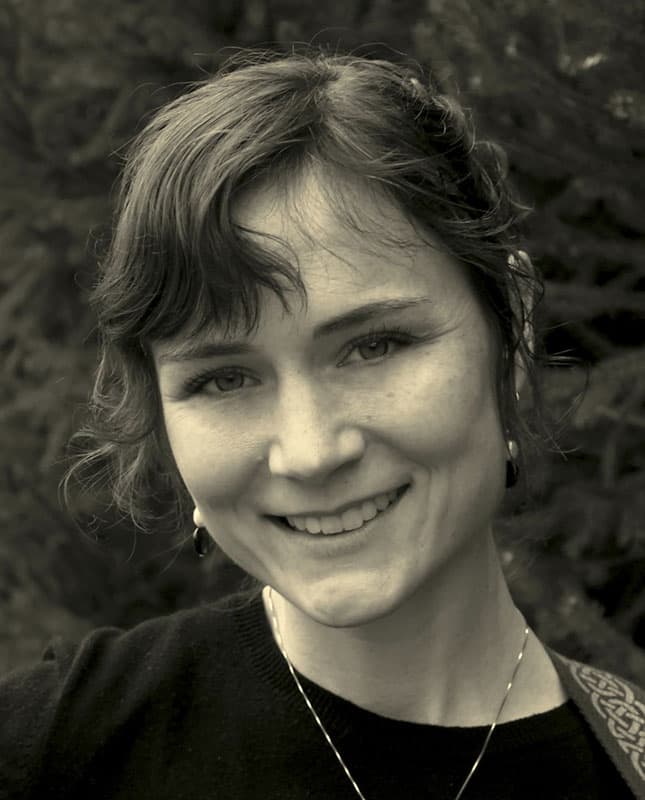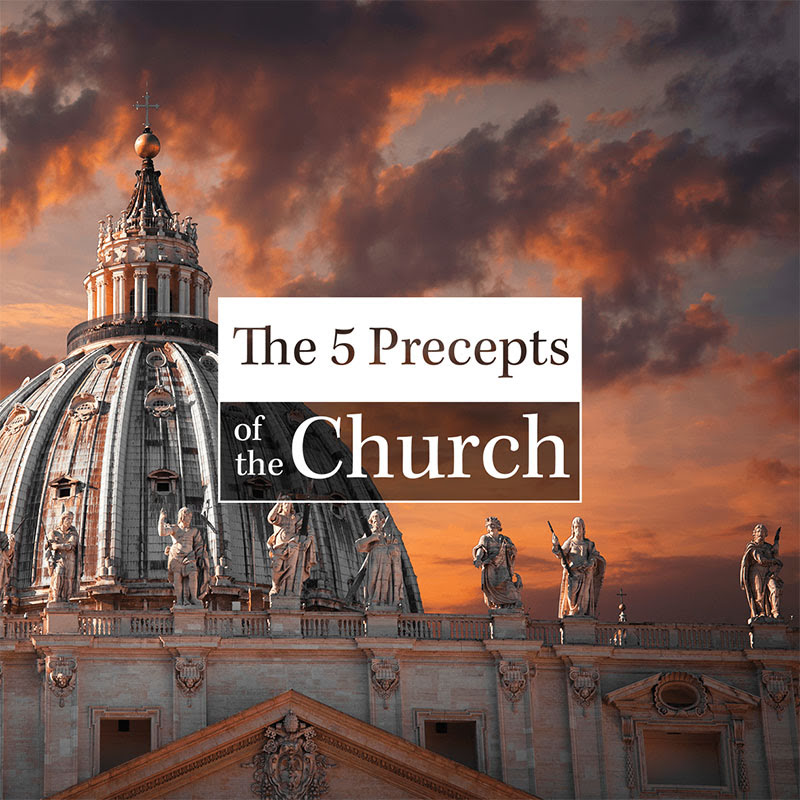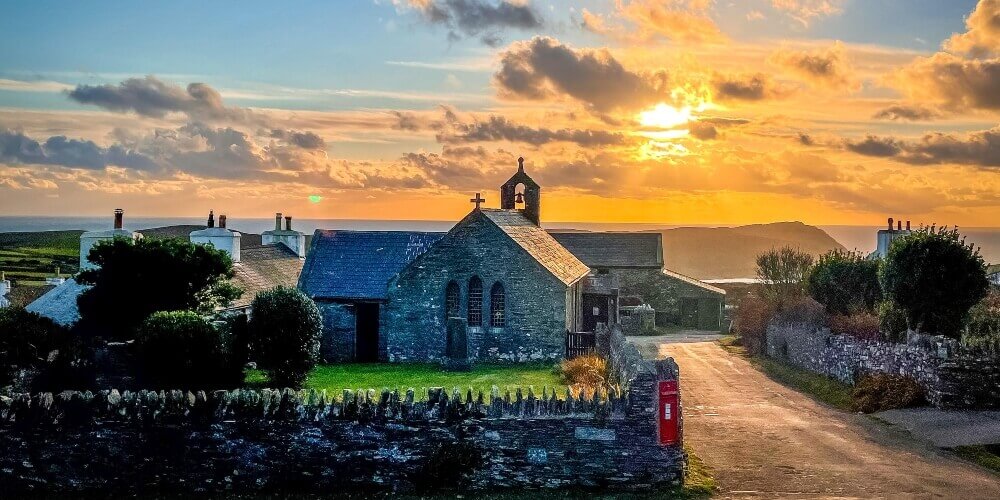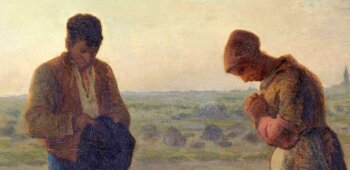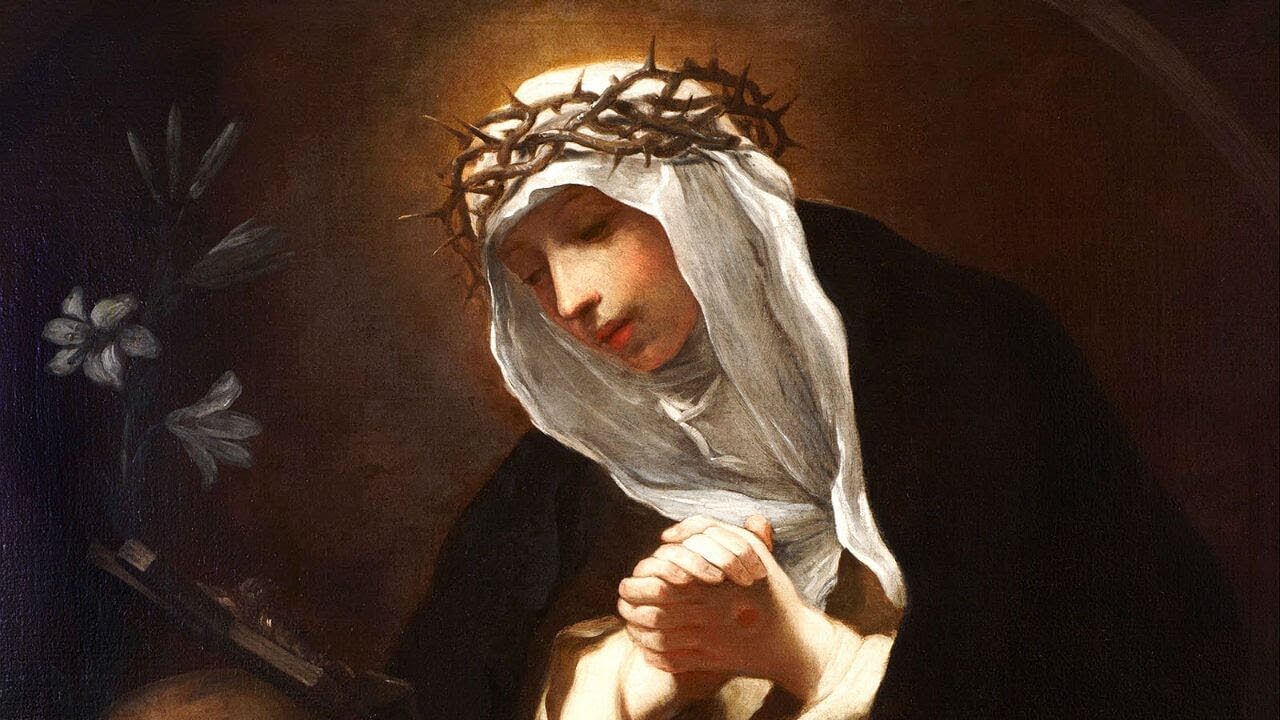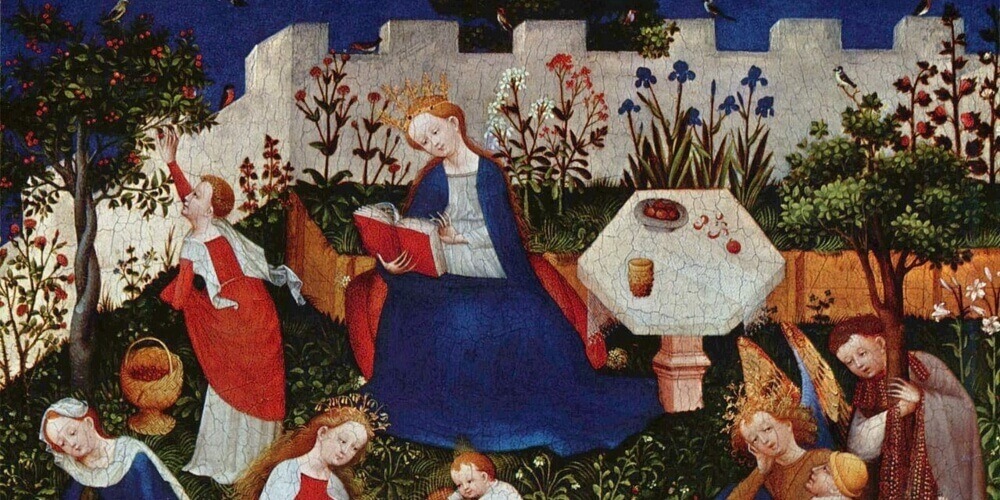I left Dublin and flew into Warrington, England, on September 1st around 9 PM. This town would be my home base for the next twelve days.
Warrington is not exactly the tourist destination of the United Kingdom.
Situated between Liverpool to the west and Manchester to the east, it’s an average, working-class place that you would never visit on purpose…
…unless, perhaps, you knew of the beautiful treasure found on one of its somewhat-dingy streets.
A Church of Heavenly Proportions
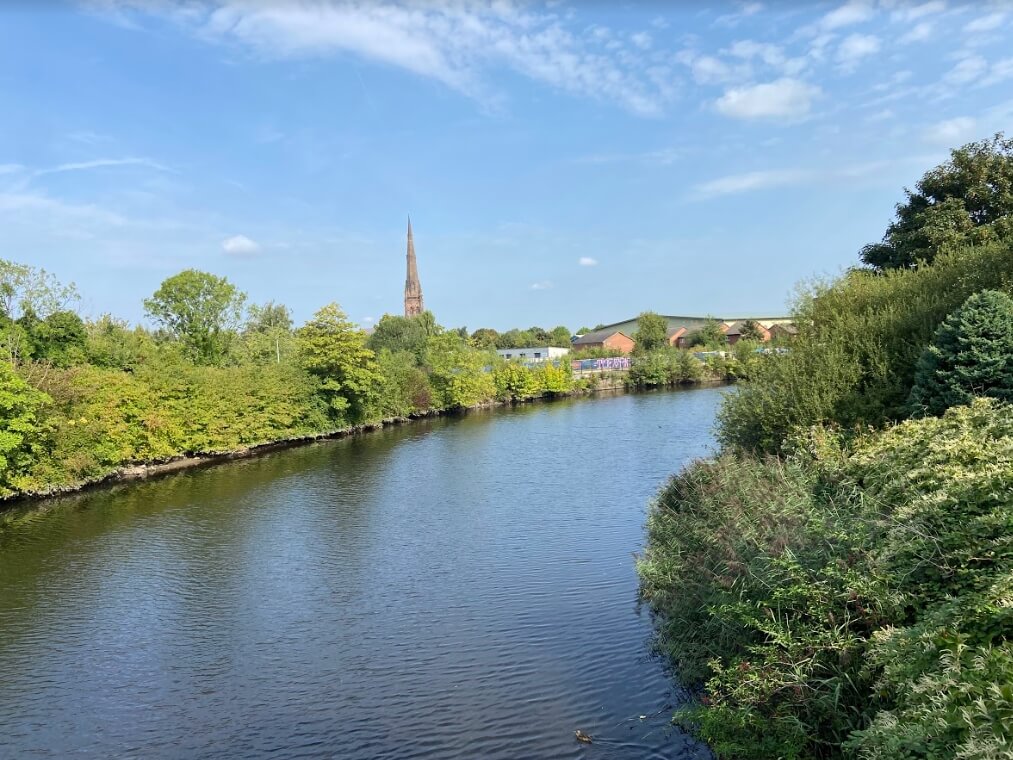
The next day, I went to the magnificent church that I’d seen in photographs and in the livestream put out daily by the parish. That glorious edifice of Gothic Revival architecture that I’d known about for years, but never visited in person: the Shrine of St. Mary.
There are so many reasons to love this place. It is a church of unearthly beauty, designed by the great Gothic Revival architect E. W. Pugin, finished by his brother Peter Paul, and consecrated in 1877. It was an easy transition from St. Kevin’s in Dublin, as both were built around the same time and in the same neo-Gothic style.
St. Mary’s stone reredos (the backdrop of the altar, as you may recall from St. Kevin’s) and the pointed arches of the nave stretch heavenward, drawing your eyes up and into the spiritual realms. The majestic statues of the holy siblings St. Benedict and St. Scholastica, emerging in life-size proportions from their niches on either side of the sanctuary, seem ready to come alive. The stone pillars march towards the altar in strength and constancy.

The stained glass throughout the church culminates in the magnificent rose window above the high altar, which features Our Lady at its center, surrounded by depictions of the biblical matriarchs who prefigured her. (I took particular delight that my name was inscribed to Our Lady’s right, near the illustration of my scriptural namesake.)
In the morning, sunlight filters into the sanctuary, illuminating the high altar and sprinkling the sacred space and the vestments of its minister with drops of vibrant color.
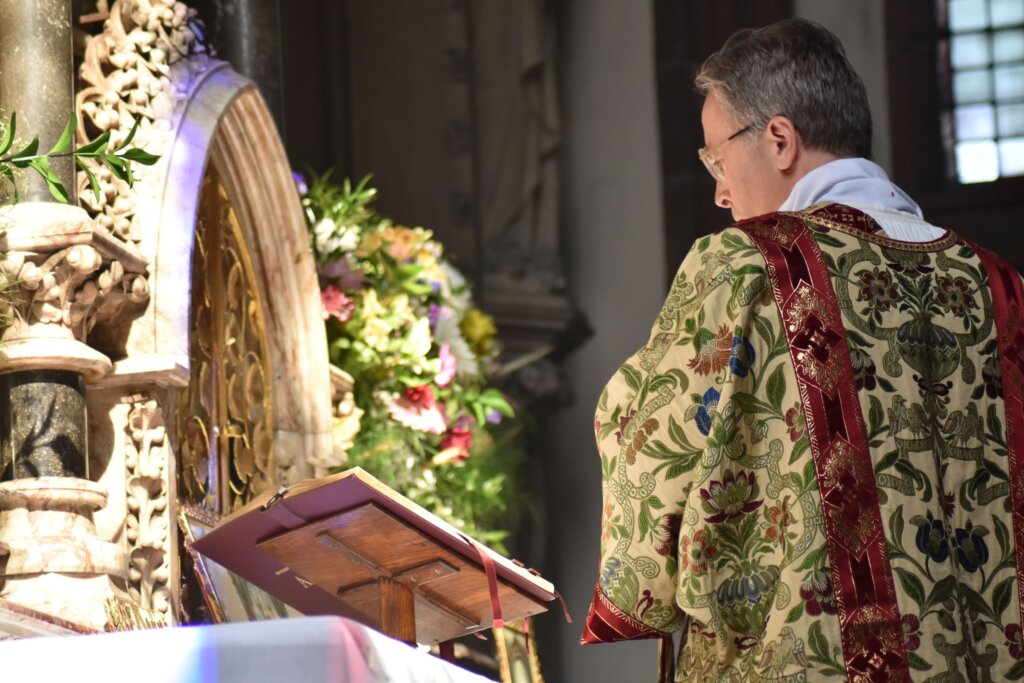
And of course, at the center of it all, is the tabernacle: one of the most unique and beautiful—I contend—anywhere in the world.
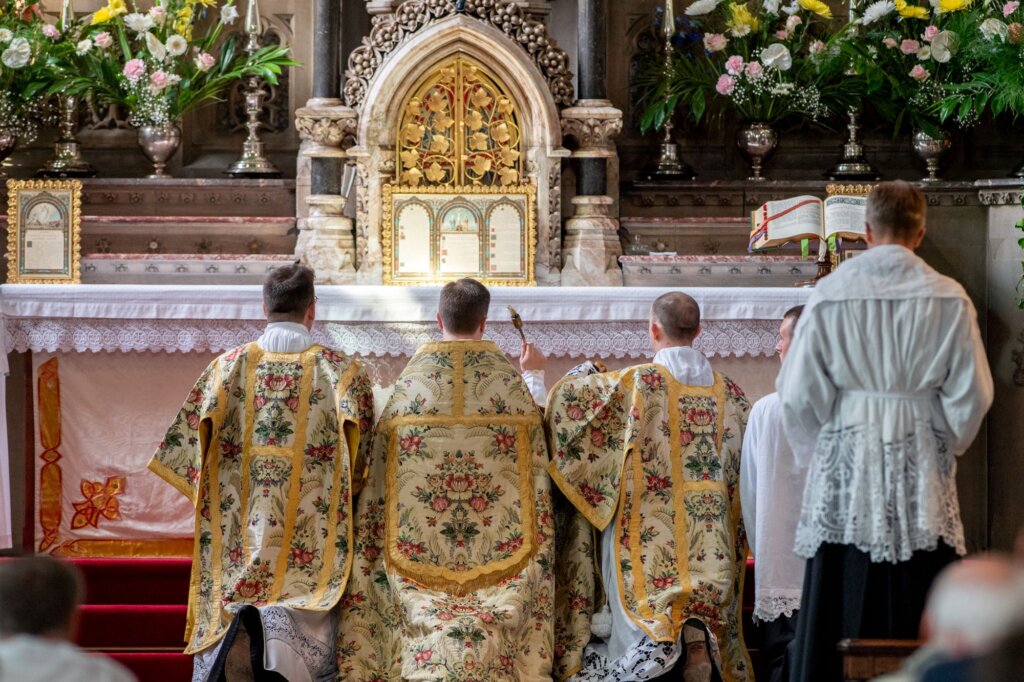
This tabernacle—a palace truly fit for a King—has two sets of doors. The inner door is adorned with bright, patterned colors reminiscent of the bold palette of medieval cathedrals. The outer door is a miniature gate of gilded, swirling leaves—the depiction of a living plant illustrating the True Vine who resides within.
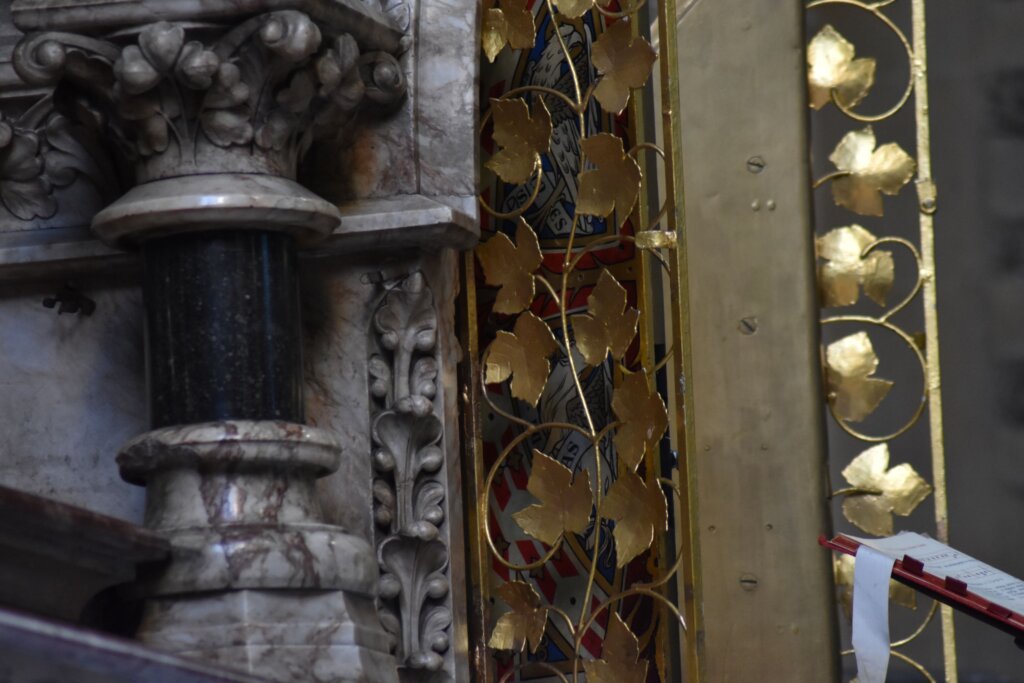
You would think that such a place could never lack devoted parishioners.
But like so many other beautiful parishes throughout the world that have been suffering from declining church attendance and declining vocations in recent decades, it recently found itself on the brink of closure.
Saving St. Mary’s
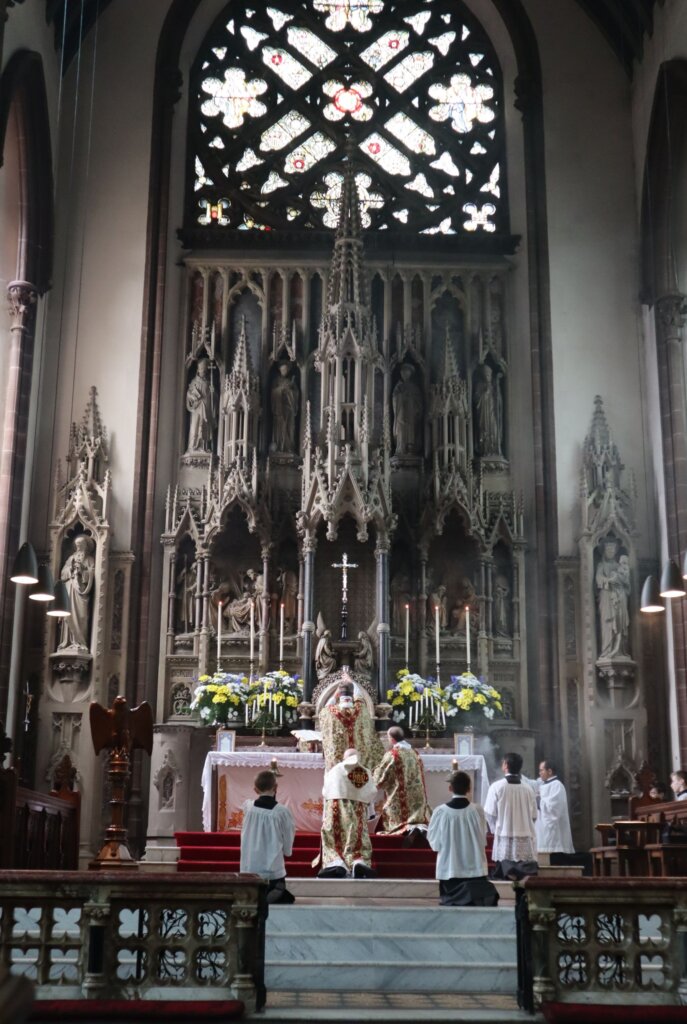
St. Mary’s Church was served by the Benedictines of Ampleforth Abbey in Yorkshire for 135 years before they were forced to relinquish care of it in 2012 due to the lack of available priests. The Archdiocese of Liverpool took over its administration for a few years.
Then, in 2015, Archbishop Malcom McMahon made an announcement that must have been music to the ears of those who loved St. Mary’s.
He announced that St. Mary’s Church would be entrusted to the care of the Priestly Fraternity of St. Peter, also known by their abbreviation FSSP, a group founded by Pope St. John Paul II in 1988.
The FSSP celebrates the Mass and the sacraments according to the 1962 Missal—the ancient Latin Mass. The purpose of the Fraternity’s founding was to provide for the continuance of the old Mass as most parishes and churches transitioned to Mass in the vernacular.
The FSSP is not a religious order like the Benedictines or Carmelites, but rather a Society of Apostolic Life of Pontifical Right—just like the Oratorians we met in Dublin.
The church was designated a “shrine” church, which basically means that it is a center of worship with a community, but not technically a parish.
Fr. Armand de Malleray, native of France but longtime resident (and recently inaugurated citizen) of the UK, was appointed the first administrator of St. Mary’s Shrine. He continues to serve in that role today. If his name sounds familiar to you, it might be that you’ve read one of his books—we carry his Eucharistic treatise Ego Eimi: It is I right here at The Catholic Company! (If you would like to read a captivating explanation of St. Mary’s architecture, I recommend Fr. de Malleray’s Sacred Liturgy as a Secret Garden—which will be available very soon through our channels.)

Fr. de Malleray is assisted in his duties by the musically-gifted Englishman Fr. Ian Verrier, who is in charge of the beautiful music you will hear if you attend a High Mass at 11 o’clock on Sunday mornings; by the vertically-gifted Fr. Gerard Quirke, who was ordained for his home diocese in the west of Ireland before beginning his discernment with the Fraternity last year; by Fr. Alex Stewart, a local from nearby Wallasey who was ordained in 2017 by Archbishop McMahon at St. Mary’s itself; and by Fr. Andrew Jolly, a diocesan priest who frequently lends his assistance.
The intervention of the FSSP in the case of St. Mary’s was not an isolated incident. The Fraternity and other groups like it have frequently been “called in” to save a failing or vacant church. Some examples closer to home include the National Shrine of St. Alphonsus Liguori in Baltimore and St. Mary’s in Conshohocken, Pennsylvania—two stunning historical edifices that were entrusted to the FSSP several years ago and which are now thriving parishes that see skyrocketing growth.
We’ll explore such places in the near future.
A Nazareth in Lancashire

St. Mary’s in Warrington is, of course, more than just a building, though a celestial building it is.
This place strives to be a center of life for the Catholics that it serves, to epitomize the ideal of parish life.
Once upon a time, entire towns and communities centered around the parish church. St. Mary’s is aiming to bring that ideal back: in its own words, it aims to build a “Nazareth in Lancashire,” a place where families can live, grow, and worship together.
A big part of that goal was the semi-miraculous purchase of one of the old Benedictine priory buildings. The Benedictines had found it necessary to sell some of the buildings adjacent to the church and, in 2018, two of them came up for sale again. Fr. de Malleray and his parish saw an opportunity, and launched the “Priory Campaign” to buy them back.
It was a tall order in more ways than one.
The buildings had a 1.5 million-pound price tag, a lot to ask of a small and overtaxed congregation with little to spare for major donations.
But didn’t someone once say that with God, all things are possible?
Catholic newspapers put the word out about the campaign. It garnered the support of the Archbishop, Catholics in politics and the nobility, and leaders among pro-life and Catholic organizations in England.
Someone of far less prestige, working in a suburb of Scranton, Pennsylvania, noticed as well. I was working for the FSSP’s North American District back then, and we put out a missive calling for donations to assist the noble cause that our confreres across the sea had embarked upon.
The congregation particularly invoked the intercession of a local saint: Venerable Elizabeth Prout, who founded the active sisters of the Passionist Order along with Blessed Dominic Barberi, the famous English Passionist who received John Henry Newman into the Church. Elizabeth and her sisters had worked in the northwest region of England, and after her death, a group made their home next door to the Benedictine Priory at St. Mary’s and taught at schools there. You could say that she is a “patron saint” of St. Mary’s!

She, Blessed Dominic, and their fellow-Passionist Venerable Ignatius Spencer are buried a mere fifteen-minute drive away, in Sutton, St. Helens.
You probably won’t be surprised that the necessary funds arrived.
St. Mary’s was able to complete the purchase of the larger of the two buildings in October of 2020—a satisfactory end to the Goliath-sized endeavor.
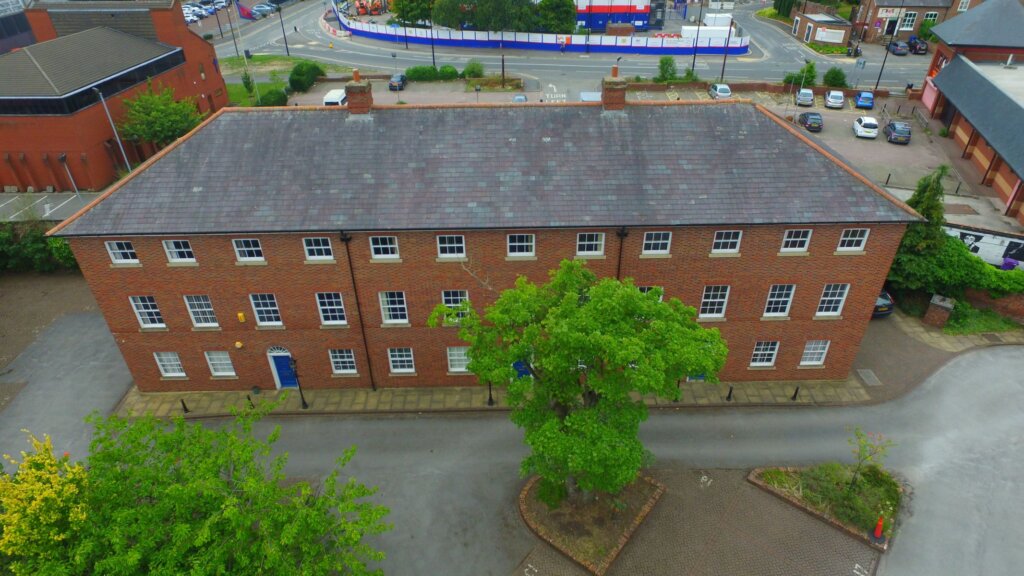
So here I was, looking at it with my own eyes in the late summer of 2022. Fr. de Malleray gave me the grand tour after the 12:10 PM daily Mass on Tuesday, the 6th of the month.
As we walked through the rooms of the priory building, up and down the flights of stairs, in and out of various rooms adorned with evidence of human activity, he explained all the projects underway within those walls: a pro-life group, the talented choir that boasted several impressive bookshelves full of sacred music, a part-time primary school.
They were small things, small projects, small efforts. The congregation is small, with about 250 people among the three Sunday Masses. But as I had learned in Dublin, worldly statistics are not all that relevant when you’re dealing with immortal souls.

Besides, what they are building at St. Mary’s is not Jerusalem—as they specifically stated in the Priory Campaign—but Nazareth.
This is, on its surface, a reference to the great English Shrine of Our Lady of Walsingham, which was built as a replica of the Holy House of Nazareth and is fondly called “England’s Nazareth.”
But what does it really mean to build Nazareth? Let’s go deeper into that concept.
Building Nazareth means piecing together not an impressive destination, but a hometown. A place to be from, and to come back to. A place to live and learn. A place to grow—a place that stays with you, even if you are forced to be physically away from it.
The Importance of Home
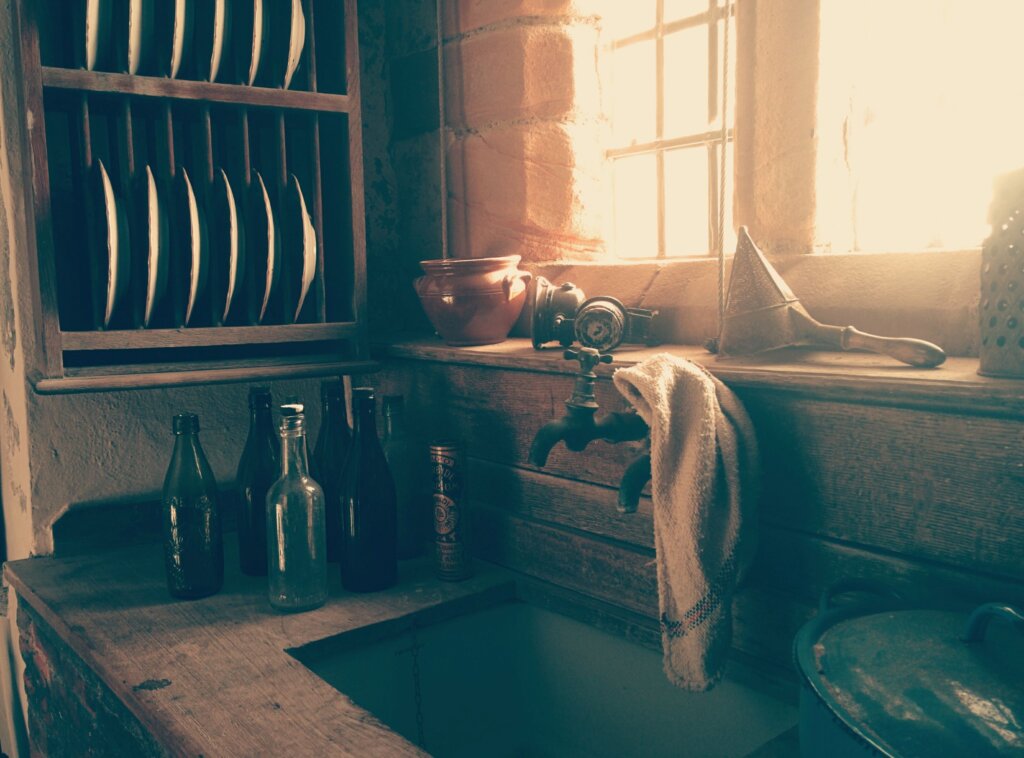
We all want to go home.
Even the best trips end with a feeling of wanting to go home—home to family, to people we know, to our own space and things, to our own food and hearth. If we don’t want to go home, it probably means our home isn’t very homey.
(Here I must admit: I didn’t particularly want to go home when I was in England, but it wasn’t because my real home isn’t homey. It was because somehow—in just a short time—St. Mary’s had come to feel like home. I’ll have more to say about that in a future article in this series.)
We love home. We sacrifice for it. If someone threatens it, we defend it. We keep our most precious things there. Many people’s most treasured memories are housed there. Our most beloved people live there. It’s the place where we feel welcomed, safe, and protected. It gives us the daily necessities for survival.
This concept extends to our hometowns and—ideally—to our home parishes. Our parish is a microcosm of Holy Mother Church, and it is there that our spiritual fathers—our pastors—instruct and guide us; where we and our brothers and sisters in Christ support and sustain one another.
Our parish gives us our daily spiritual sustenance: the Holy Eucharist, offered through the Holy Sacrifice of the Mass every day. There we are instructed in the Faith, receive the other sacraments, marry, and welcome new members into the Church.
But an ideal parish life goes even further.
What if your parish was the place you went to school, met your friends, and recreated? What if it was home base and not merely a weekly or biweekly item on your agenda? What if you wanted to be there—to actually be there, and not just go there? What if—now I’m really going out on a limb—you loved it so much you wanted to do something for it, contribute to it, just like we do with our physical households?
What if it…felt like home?
I consider it vital to the retention of young believers that their parishes be more to them than a mere agenda item, a place they go just to perform an obligation. If something is done out of mere obligation—be the sense of obligation ever so sincere—at some point it’s going to have a hard time standing up to the siren-song of the world, which falsely promises more fun, fewer rules, and a better sense of belonging.
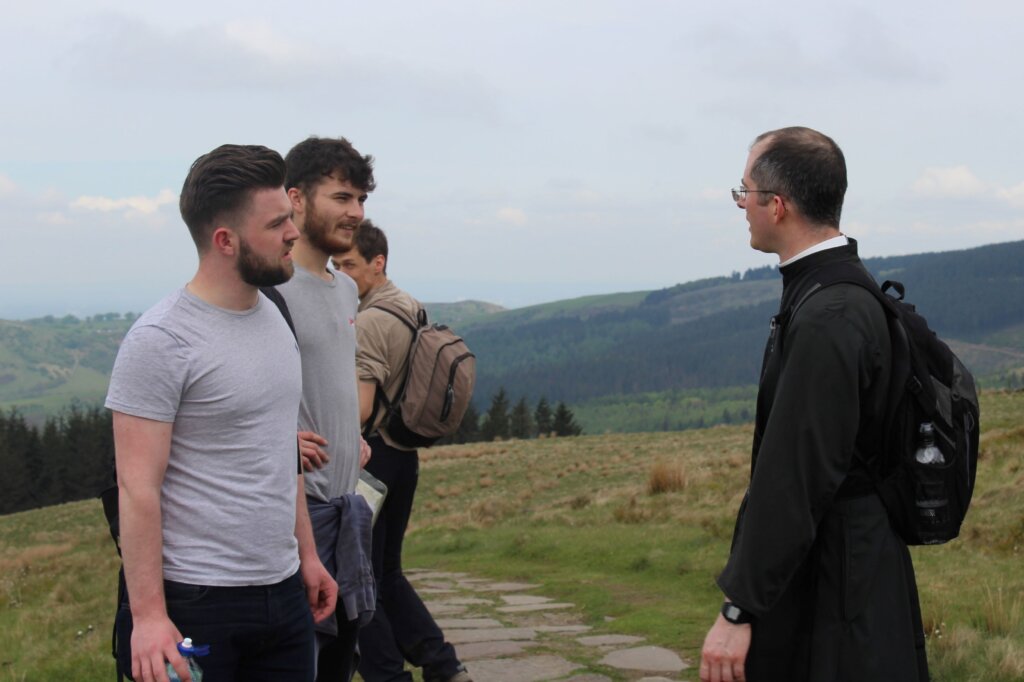
For a young person, a real love of his home parish could be a decisive formative factor in his life. The love of a parish—the piece of the Church that he can see, touch, and relate to—teaches him a love for the Church at large and for his faith, in all its seen and unseen aspects.
If he loves being at his home parish, chances are that he will develop a lifelong love of being in his Church, a love that will last even if the physical parish changes.
This love is nourished by a well-rounded parish life that encompasses mind, body, and spirit. Founded on Holy Mass and the sacraments, it includes both things given and things received; both work and play, solemnity and laughter, discipline and fun; sacrifice and abundance; God, family, and friends.
A love like that is a hard bond to break.
“Can Anything Good Come Out of Nazareth?”
The United Kingdom—much like the Ireland I encountered so shortly beforehand—isn’t in great shape. The grim statistics on religious practice and vocations are just one piece of evidence that things are not as they should be.
According to a 2018 study by St. Mary’s University in Twickenham, London, 3.8 million Catholics in England and Wales identify as Catholic. This is a very different number from the 6.2 million who say they were raised Catholic, suggesting that the Faith is having trouble sticking as these Catholics grow up.
Only 27.5% of Catholics attend church regularly. Nearly half of the population claims “no religion” at all.
In 1987, England and Wales had over 120 entrants into diocesan priestly formation. In 2010, they had a little under 60. Last year, they had just 18.
Entrants into religious life numbered 138 in 1987. That number fell to 38 in 2010. Last year, it was 26.
In short, England, much like Ireland, needs Nazareth. It needs to start again, from the beginning, from the inside out, from its heart, its hometown. It needs to rebuild, more than it ever did after any war of yesteryear.
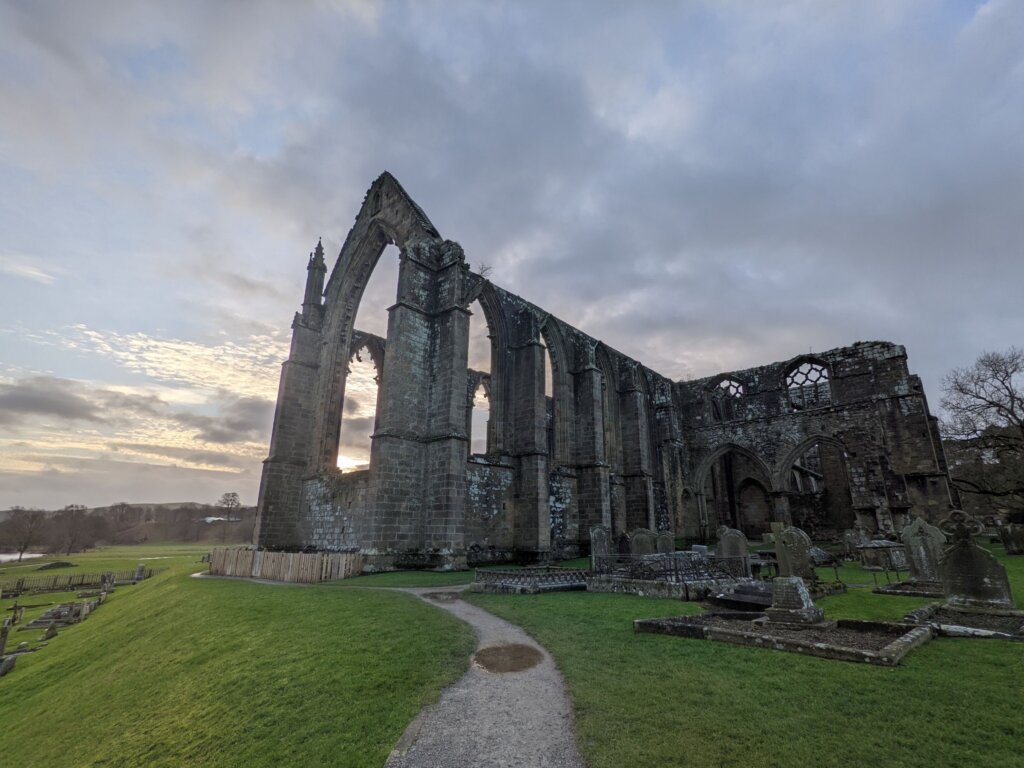
Here in Warrington—at this Shrine which has seen two world wars, all the spiritual battles of recent years, and has survived its own brush with demise—such godly work is well underway. Quietly, peacefully, nearly unnoticeably.
It is not Jerusalem. It is a long way from London. It is hidden. It lives on the plainly-named Smith Street that is famous for nothing else.
In other words, it’s a lot like the original Nazareth.
It’s a holy house in the midst of a world without Christ, a world that finds itself once again waiting and aching for the light.
In the heart of this holy house—this holy home—the greatest work is done, in the obscurity and silence so loved by the divine. Here the Light comes to earth. Here, Christ is conceived again in faithful souls who welcome Him. He grows and thrives amid humble dwellings, sanctifying the everyday, both the ordinary and extraordinary things of life.
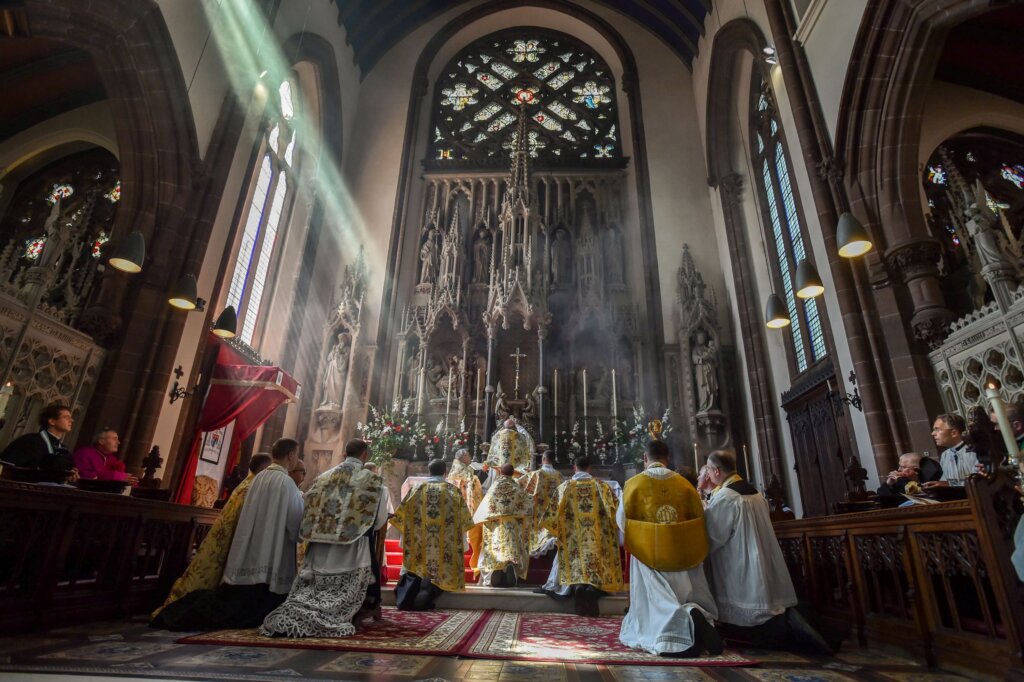
Of course, the parishioners formed within the walls of St. Mary’s will not always be at St. Mary’s. Jesus did not remain all His life in Nazareth. God’s will often takes us far away from our homes, hometowns, and home parishes. But wherever Jesus went, He always remained Jesus of Nazareth and, God-willing, the faith we receive at our home parishes will flourish within our hearts, even as we spread it to the wider world.
The future Apostle Nathanael posed a famous question in the Gospel of John, when Philip informed him that they had found the Messiah, and that this Messiah was Jesus of Nazareth. Nathanael’s curt reply was: “Can anything good come out of Nazareth?”
Anyone could ask the same question of Warrington, and I reply with the wise Philip: “Come and see.” +
